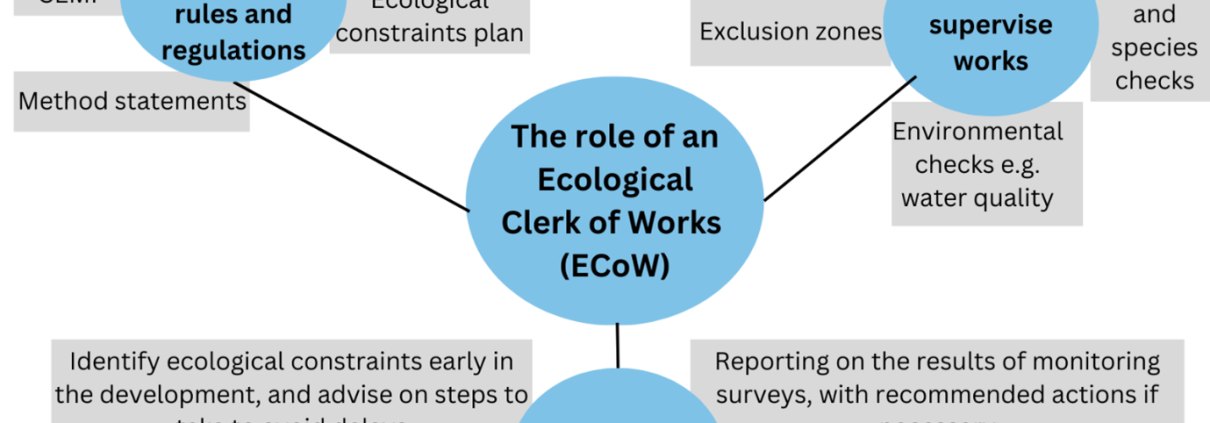An ECoW Project – Union Chain Bridge
An ECoW Project – Union Chain Bridge
What is an ECoW?
An ECoW (Ecological Clerk of Works) monitors works on a development site, and provides advice on how to manage ecological and environmental risks. They ensure that works are completed in accordance with relevant legislation, planning policy, and documents such as method statements and Construction Environment Management Plans (CEMP). An ECoW’s role is often site specific, but can involve informing contractors of the ecological risks on site through tool box talks, conducting checks of habitats before works commence, and supervising works which carry ecological risk.
An example of a project in which E3 Ecology have provided ECoW is the restoration of Union Chain Bridge, which lies over the River Tweed in the Scottish Borders. This project was done in conjunction with Northumberland County Council and their chosen contractors.
Why did the bridge restoration project require an ECoW?
An ECoW was employed at this site to support the site manager and main contractor to adhere to the Construction Environmental Management Plan (CEMP) and necessary wildlife legislation. The site is located within an ecologically sensitive area, being within two statutorily protected sites; a Site of Special Scientific Interest (SSSI), and a Special Area of Conservation (SAC). Furthermore, there were several species considered as qualifying features of these protected sites located within the stretch of river which could be affected by the planned works.
Preliminary surveys found the bridge itself to be suitable for roosting bats, and though further surveys found no bats roosting in the bridge, nesting birds were present. The river and its surrounding habitats were also found to be suitable for a variety of protected species, including otters and kingfishers. Species listed as invasive and non-native on Schedule 9 of the Wildlife and Countryside Act were also found, including Himalayan balsam.
With such a range of ecological sensitivities to consider, an ECoW was considered necessary to support the project.
What has the work involved?
Since works commenced, E3 have conducted regular visits to the site to ensure that works are not impacting on the River Tweed, and surrounding habitats. This has involved supervising specific works being undertaken, and conducting checks for protected and invasive species.
Thankfully, ecological issues on site have generally been few, though there have been some incidences with nesting birds. One such case was when workers were away for a weekend, and a pied wagtail laid 6 eggs in a nest within an exhaust of a dump truck! Nesting mallards also caused delays when they started to nest atop the Scottish tower just as high-level works to the tower were about to commence. Following these instances, the team on site became very diligent in keeping an eye out for potential nesting issues during the 2022 breeding season. Because workers, with ECoW assistance, were able to reduce the number of problematic nesting spaces before they were nested in, no delays due to nesting birds were encountered for the remainder of the year.
Himalayan balsam has been a further ecological constraint present on site. This highly invasive species is present in abundance along the stretch of river, and it was imperative that the workers did not allow the plant to spread off site, or further downstream. Managing the issue has involved regular checks of the plant’s growth, and alerting staff so that new growth is promptly removed. Once workers on site were taught to identify the species, they were especially vigilant in strimming it down and pulling up any stray plants. In doing so, the amount of plant going to seed was greatly reduced.
After over two years of hard work from the contractors at the bridge, and some very picturesque ECoW visits, works have recently finished at Union Chain, with the bridge restored to its former grandeur. Thanks to the work of E3, and the diligence and professionalism of contractors on site, the project was completed while successfully protecting the special biodiversity of the bridge and the local area.




Leave a Reply
Want to join the discussion?Feel free to contribute!